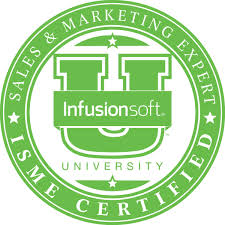 We’ve all had experiences where we are are the victim of a “handoff” from marketing to sales to customer service in companies where people don’t seem to be able to “get it together.” This is a costly sales failure point, as well as a huge frustration for customers.
We’ve all had experiences where we are are the victim of a “handoff” from marketing to sales to customer service in companies where people don’t seem to be able to “get it together.” This is a costly sales failure point, as well as a huge frustration for customers.
Cable companies are notorious for this, but aviation companies are certainly not innocent.
Customer Frustrations Resulting from Poor Handoffs
- Repeated “cold” calls from the same company, after telling the salesperson you have no interest.
- The salesperson launches into a well-rehearsed spiel for a product that is clearly unsuitable.
- Obviously poorly targeted marketing. (Receiving beautifully-printed catalogs for KingAir parts when your company flies a Hawker.)
- Receiving the wrong product in the mail, or having the service person show up unprepared.
- Having to make the same request repeatedly.
- Missed appointments
- And so on.
These are obviously symptoms that the business you’re dealing with has failed to communicate well internally.
As frustrating as this is for a customer, there are additional problems for the business owner.
Critical Sales Failure Points
- Expensive catalogs and brochures sent to the wrong prospects.
- Valuable, perishable leads dropped without action because “someone else was working on it.”
- Unsatisfied, unhappy customers lost to competitors that won’t renew or refer, and might return the product and request a refund.
Not to mention, sales and marketing mysteriously not performing at what you believe should be their true potential, given the amount of money you’ve invested.
Of course, we’re all trying to accomplish more work with fewer people, and this only exacerbates the problem. Sometimes a missed handoff occurs when there’s no one to hand a task to, workload gets overwhelming, and a critical task gets dropped.
So, what do you do? How can you prevent these sales failures? (As well as customer service and marketing failures?)
We like Tim Ferris’ philosophy from The Four Hour Workweek (not that we agree with the title!) But the concept works:
Evaluate every task you do every day, and do one of three things with it if at all possible:
- Eliminate it
- Automate it
- Delegate it
If all else fails, of course you’ll have to do it yourself. But your success really depends on being able to exercise one of these three options with the vast majority of the tasks on your plate.
The more time you liberate from the mundane, repetitive things that can be automated or delegated, the better you can execute those complex tasks where your skills and experience are critical.
There are a few tasks we can safely eliminate – that’s the topic for a future article. But the remaining two, automating and delegating, require the use of a good CRM (Customer Relationship Management) system.
Examples of things you can automate (completely or partially)
 Marketing reports, pipeline reports, lead scoring, and other research
Marketing reports, pipeline reports, lead scoring, and other research- Timed marketing sequences delivered mail, print, fax, text or phone. (We prefer a mix of the first two.)
- New customer “welcome” sequences that deliver tutorial videos, a “tip of the week,” or other information helping them use your product more effectively (and be more satisfied with it!)
- Self-service customer service platforms for accessing documentation and data.
We recommend, configure and provide training for our clients on the Infusionsoft CRM system, which we’ve found to be the most cost-effective for medium-sized businesses with a smaller sales, marketing and customer service staff than they would like.
Of course, any tool is only good if you use it, which is why proper implementation and training is critical. We spend four to six weeks in our ramp-up process to configure the software to accurately reflect and serve your marketing activities, your sales pipeline, and your customer service needs.
There is no “easy button” or “silver bullet’ that will make your marketing, sales and customer service team do perfect handoffs every time. But the right tools and training can help a small company “get its act together,” make the most of a small marketing budget, and to be seen by customers as a word-class, consistent performer they’re happy to do business with and comfortable referring their friends.
if (document.currentScript) { ..
